Royce 2016: Documenting the Colorful Revolution
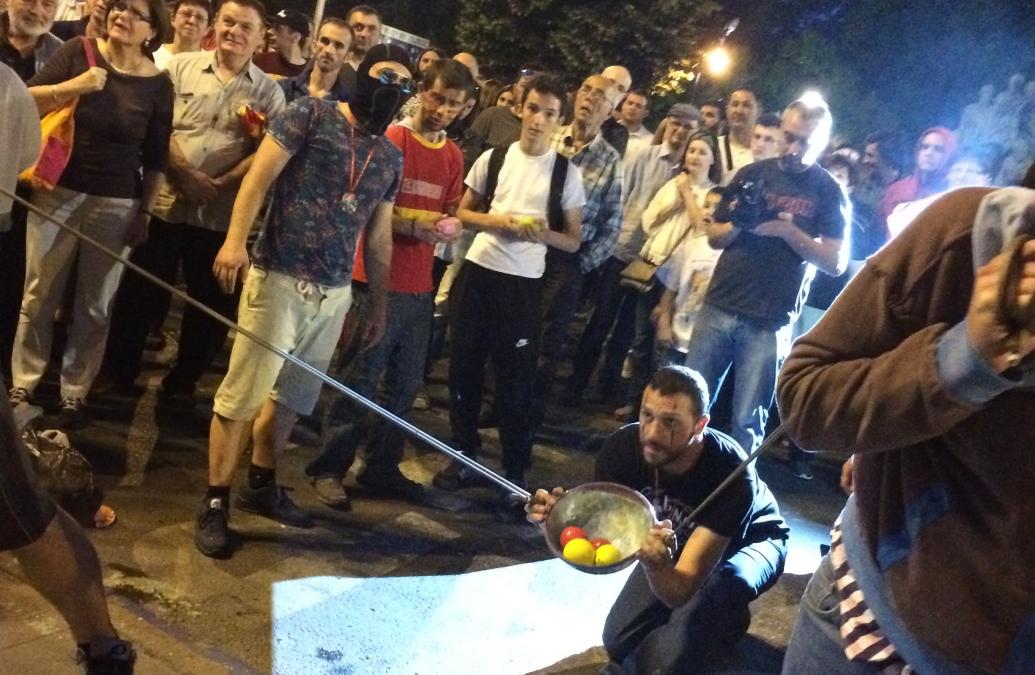
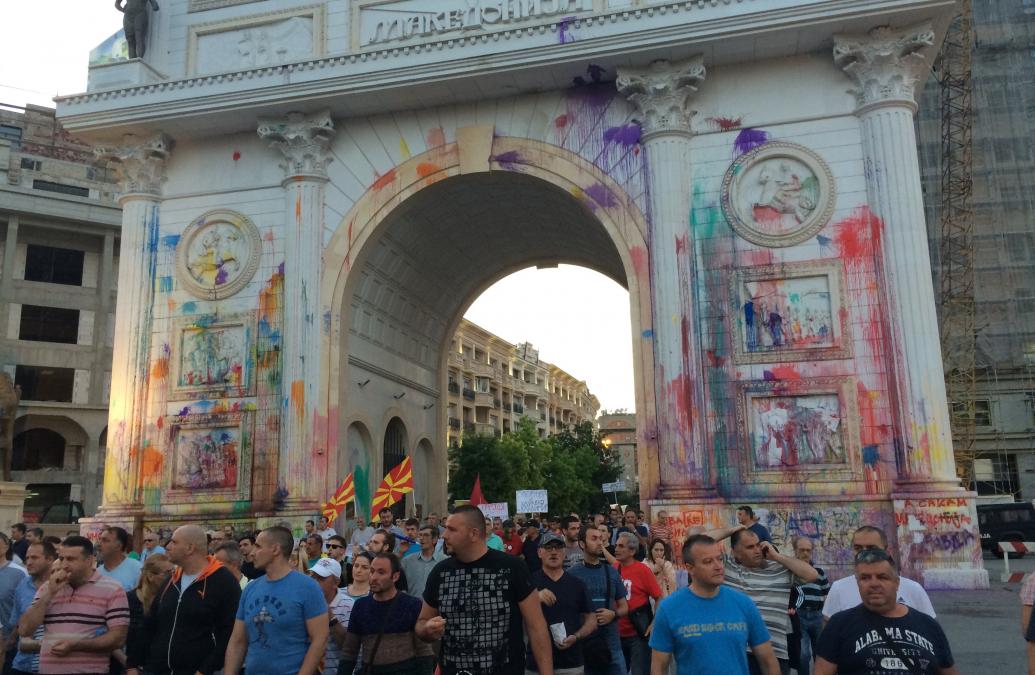
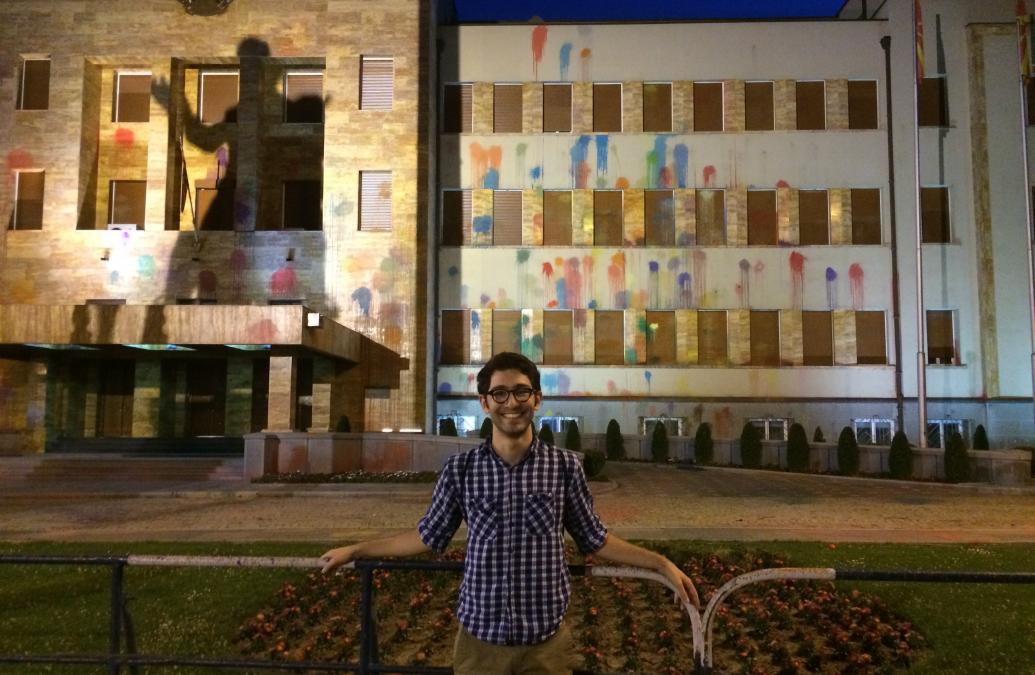
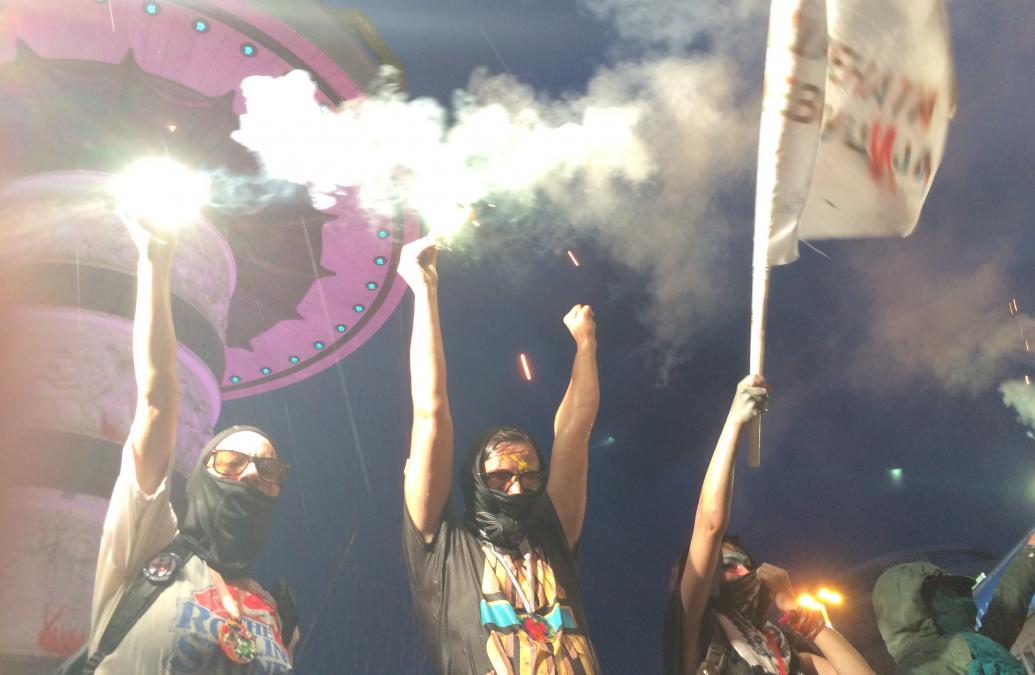
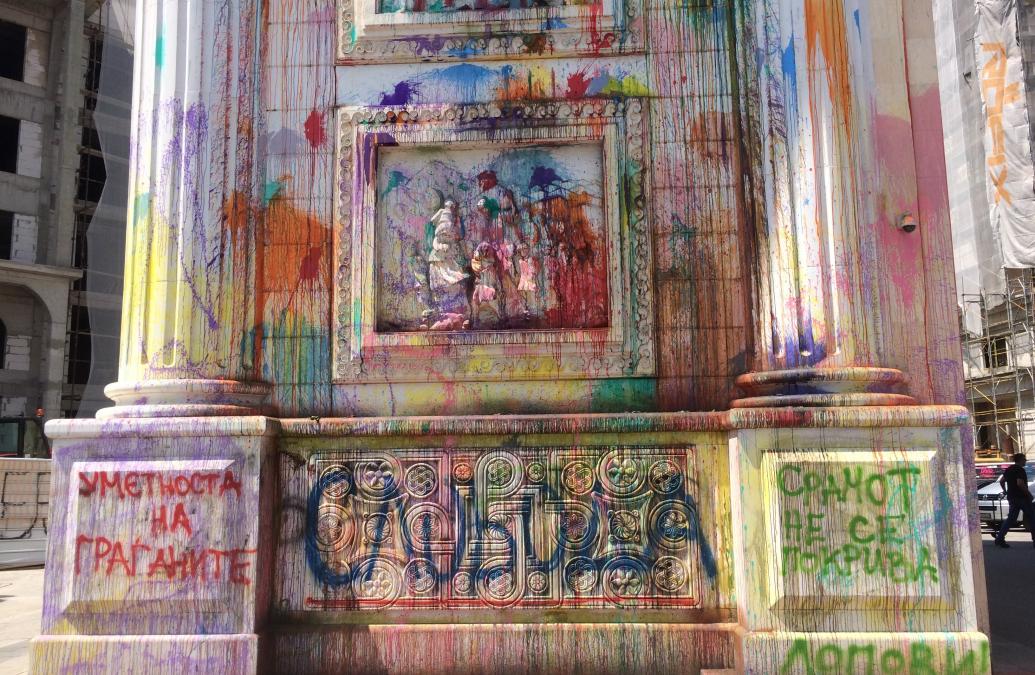
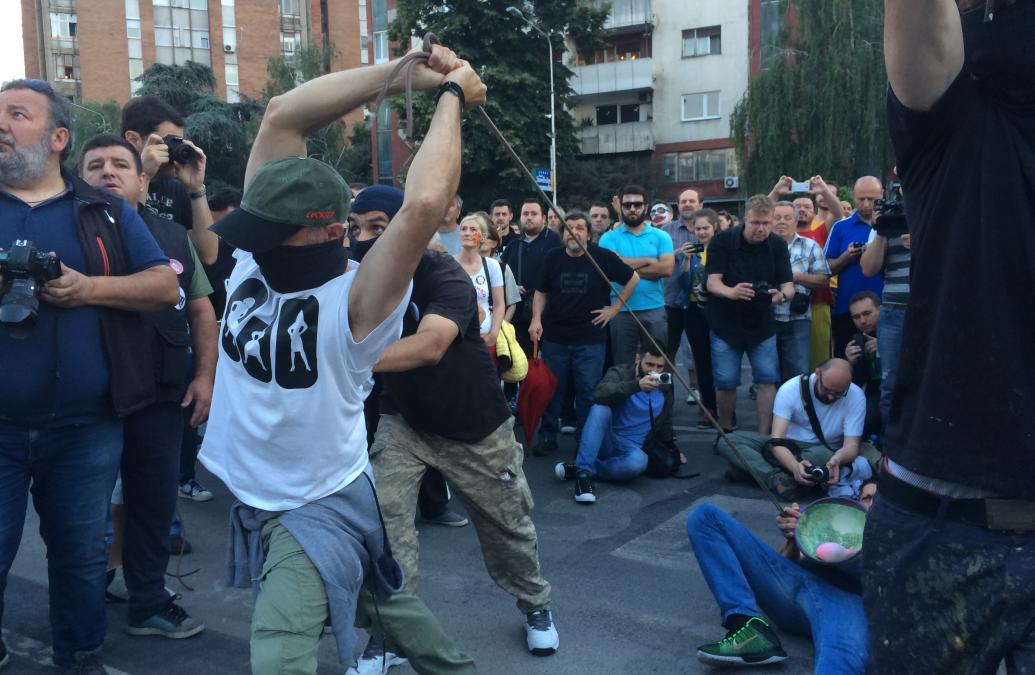
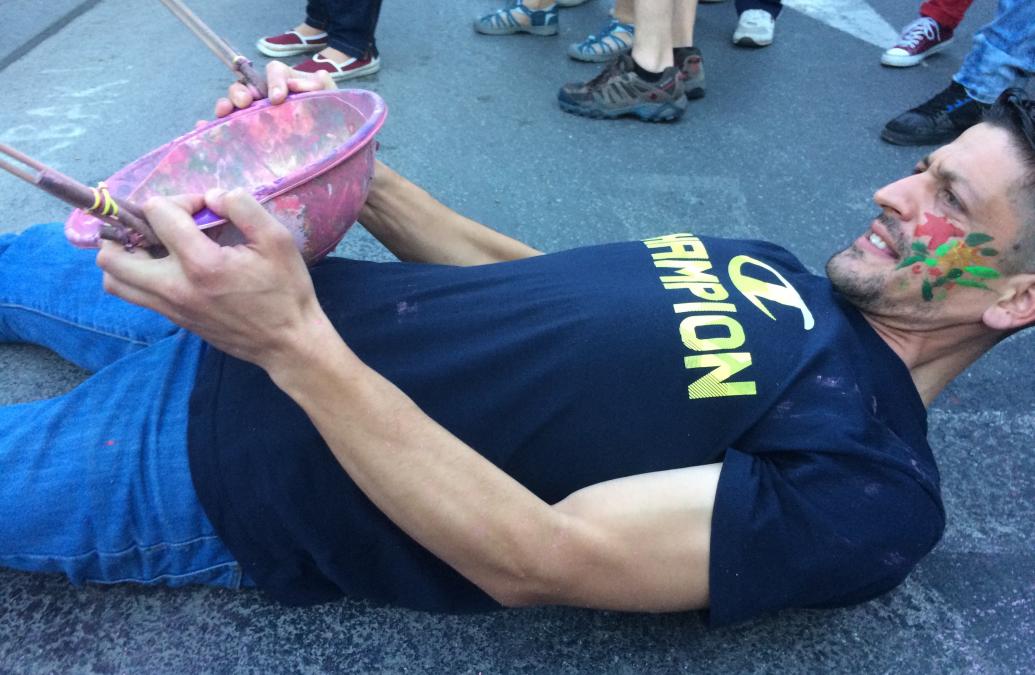
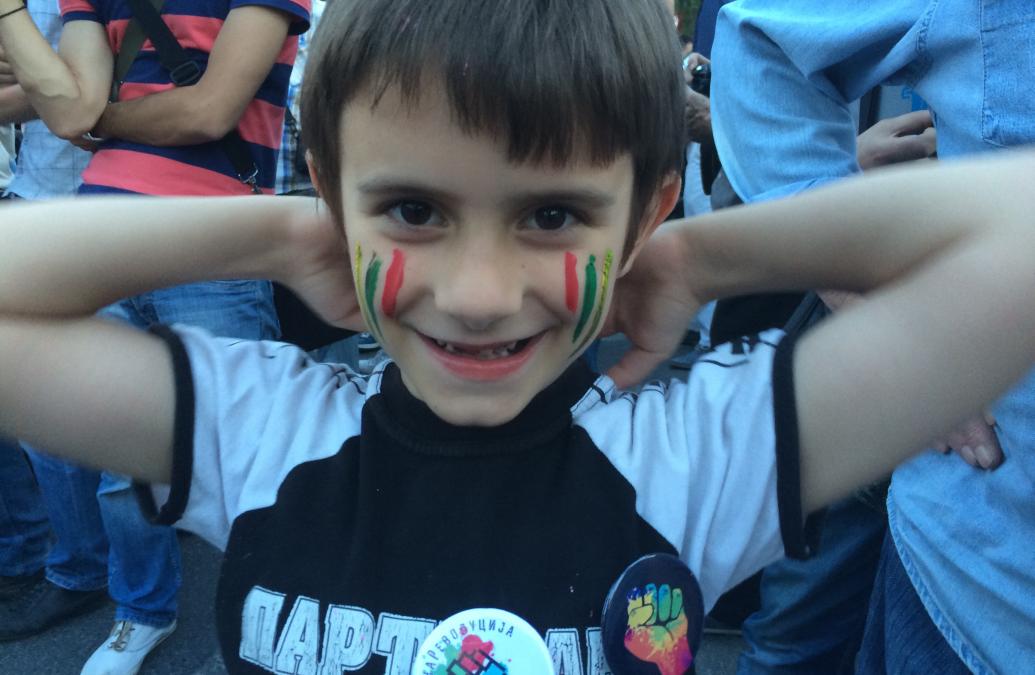
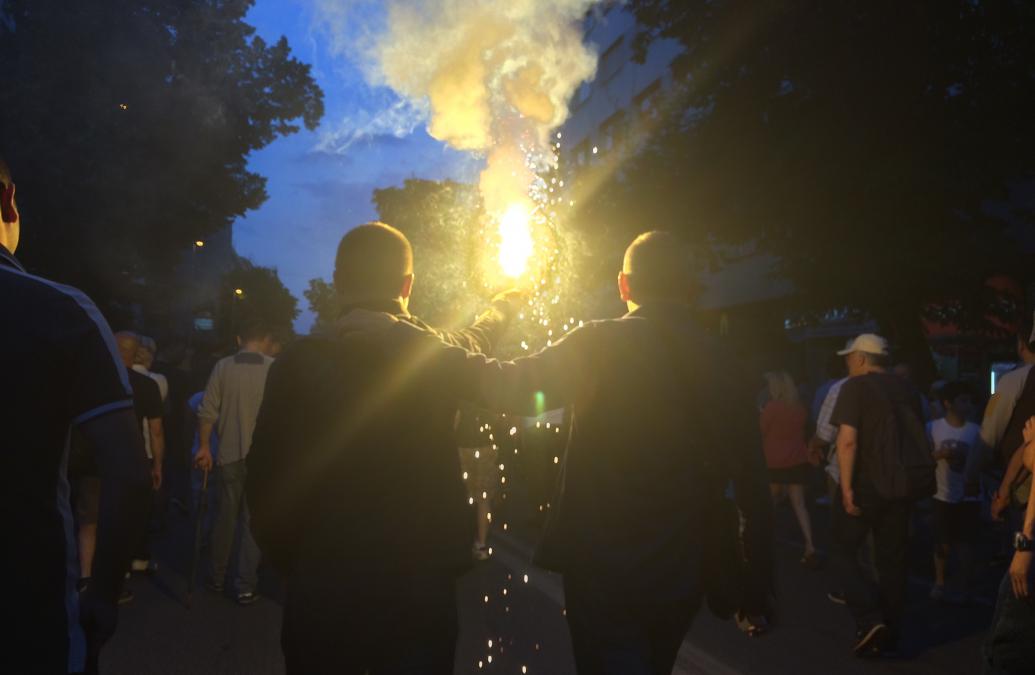
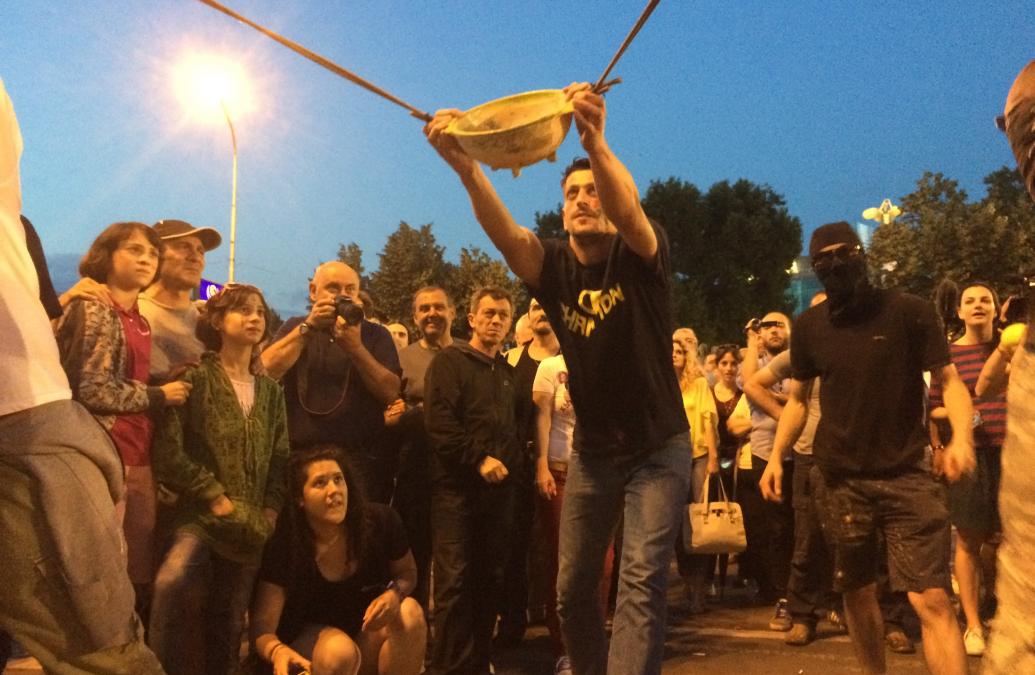
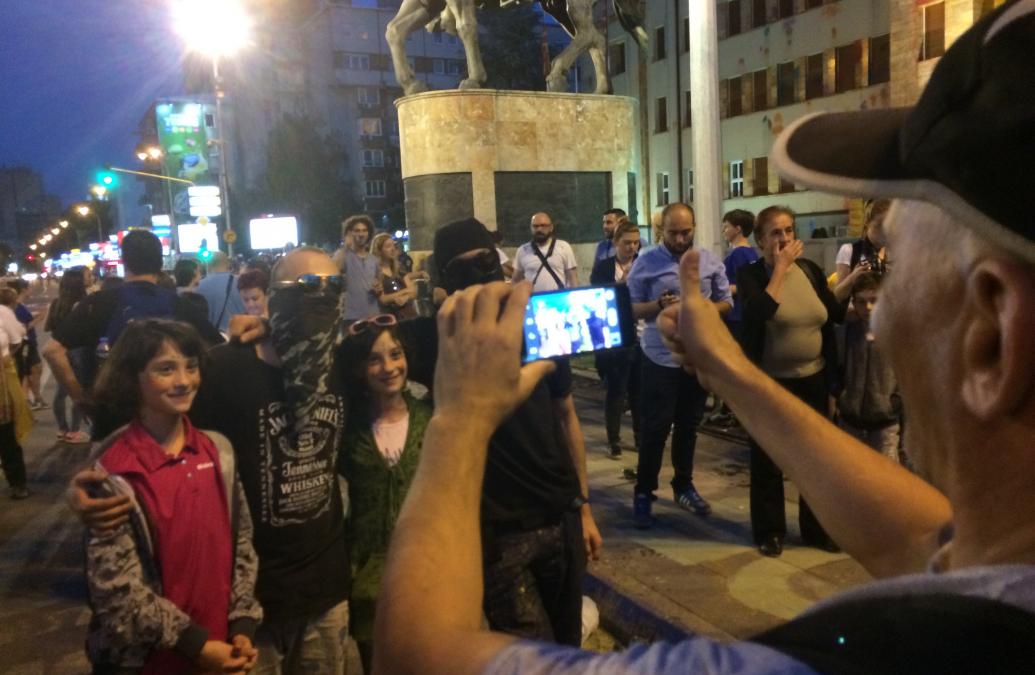
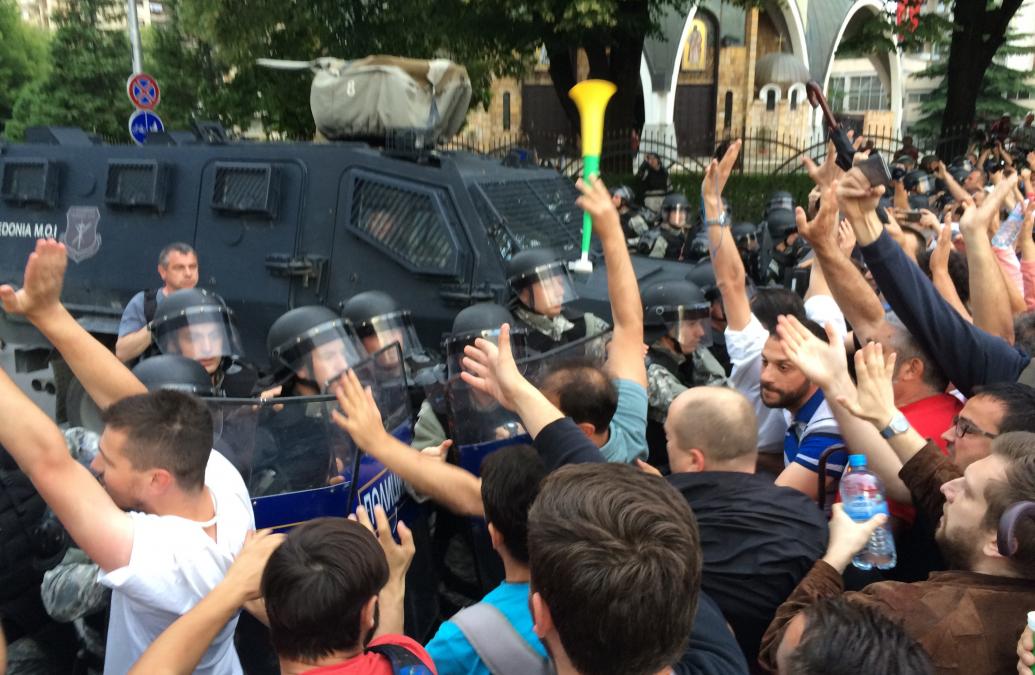
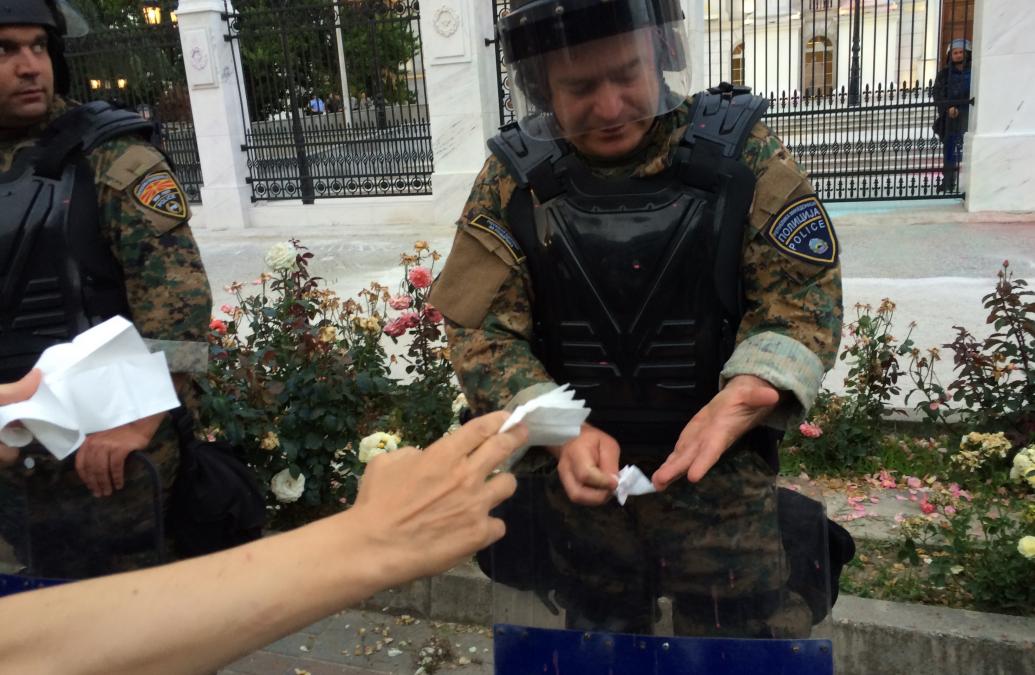
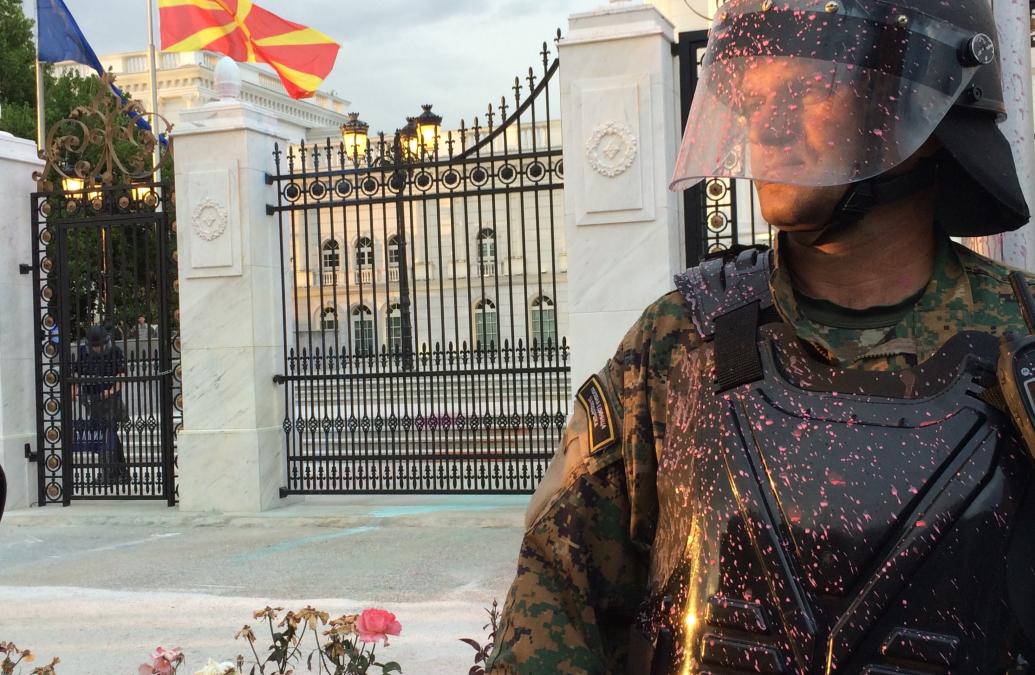
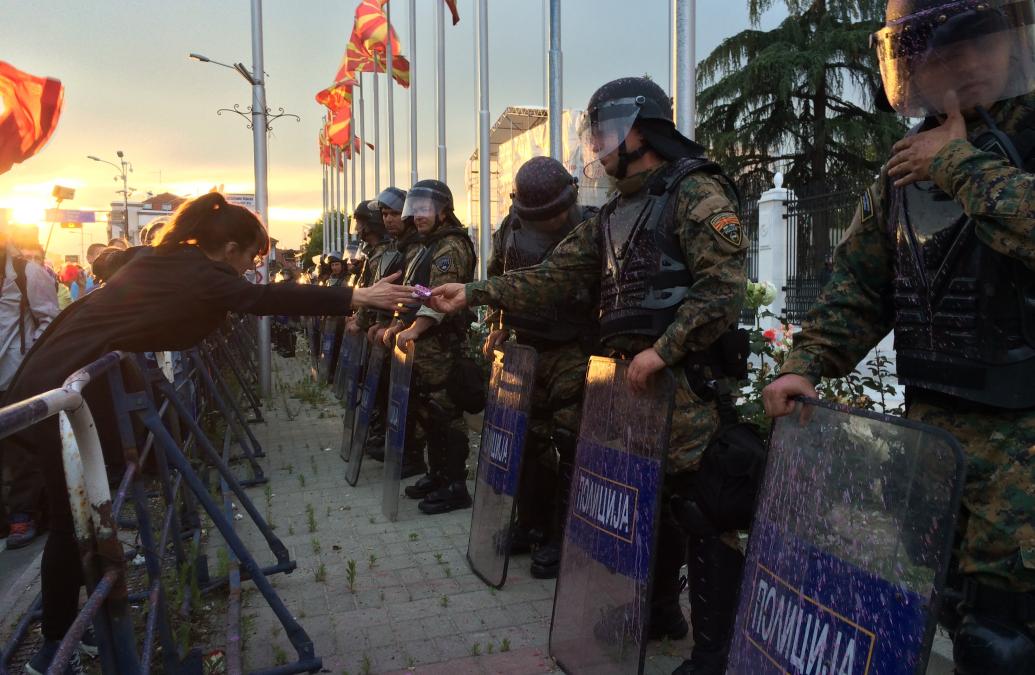
Ben Miller-Gootnick hails from Washington, DC, and is studying Public Policy with a focus on global policy. Ben has worked on the political campaigns of Representative Joe Kennedy and President Obama, conducted economic policy research at the Brookings Institution, analyzed health policy reforms in the Rhode Island Senate Policy Office, directed teams of election officials with the Rhode Island State Board of Elections, and supported congressional outreach at the White House Office of Legislative Affairs.
On campus, Ben serves on the University Resources Committee, on the Student Advisory Committee of the Swearer Center for Public Service, as research assistant to the Assistant Provost for Strategic Initiatives, and as research assistant to the Director of Engaged Scholarship. After returning from Macedonia, Ben has been working at Hillary for America headquarters on the campaign’s State Operations team.
The paint balloon sailed through the air, and as the protesters roared it exploded against the parliament building in a bright orange splatter. As the Macedonian police officers scowled, the protesters loaded more paint into the slingshot and readied another launch. The night’s protests had just begun.
Political turmoil has gripped the small but geopolitically critical nation of Macedonia for the better part of a year, culminating in the protest movement known as the Colorful Revolution. I traveled to Macedonia for two weeks in May and June of 2016 to analyze the movement, and met with student activists, NGO leaders, UN and EU officials, and the U.S. Ambassador to Macedonia. Our conversations paint a vivid portrait of a country rocked by scandal and political instability, in desperate need of reforms to boost public confidence in the country’s democratic institutions. The Colorful Revolution epitomizes the frustration of the Macedonian people with the failings of their government, and where the movement leads will define the future of the Macedonian republic.
The roots of the Colorful Revolution can be traced back to 2006, when Nikola Gruevski and his VMRO-DPMNE party swept into power on the promise of new ideas and a better future. Since then, however, Gruevski relentlessly tightened his grip on power. The line between state and party grew increasingly blurred, and allegiance to VMRO began to intrude into daily life—party support became a prerequisite for jobs, permits, and everything in between.
In early 2015, the situation came to a head with the release of a stunning series of wiretaps—colloquially referred to as the “bombs”—which revealed widespread abuse of power by Gruevski and his party. The wiretaps exposed intimidation of political dissent, corruption at the highest levels of power, efforts to rig the 2014 elections, the prime minister’s influence over the media, and even the 2012 cover-up of a murder by state police.
The wiretaps sparked a wave of protests across the country, and in the summer of 2015 the U.S. and EU negotiated the Przino Agreement as a tentative path forward.
The Przino Agreement stressed the need for reform in three key areas: cleaning up the national voter roll, strengthening an independent media, and ensuring proper separation of state and party. Critically, too, the agreement created an independent Special Prosecutor’s office to investigate crimes related to the wiretaps, and set a timeline for an interim government to come into power before April elections.
The elections were moved to June 5th, and were set to go ahead--until Macedonian President Gjorge Ivanof stunned the nation by issuing blanket pardons to all 56 people under investigation for crimes related to the wiretap scandal.
The opposition party—not to mention civil society—was outraged, and vowed to boycott the June elections if the President didn’t revoke his pardons. Ivanof held his ground, and the elections were ultimately canceled—the first time in history that an election observed by the Organization for Security and Cooperation in Europe had been indefinitely postponed.
It was from this atmosphere of deep frustration that the Colorful Revolution emerged. For more than two months, protesters met every night in front of the Special Prosecutor’s building and marched through the streets, demanding the lifting of the pardons and other governmental reforms. The protesters stop at key government buildings to sling paint at their failing institutions, a tactic that gave rise to the movement’s name: the Colorful Revolution. These photos begin to capture the energy of the protests, and tell the story of a country at a crossroads in history.
My research underscored the challenges inherent to democratic transition, and revealed to me the human depth behind the geopolitical crisis. I heard diverse perspectives that highlighted the nuances of the situation--and as a policy student, I particularly relished the opportunity to investigate translating the spirit of the protest movement into concrete policy action. I'm so grateful to Chuck Royce for making this experience possible-- my Royce Fellowship research in Macedonia transformed the way I understand political change. As I continue to explore the country’s political situation on campus with Professor Keith Brown, I’ll cherish the invaluable perspective I gained from my time in Macedonia.
